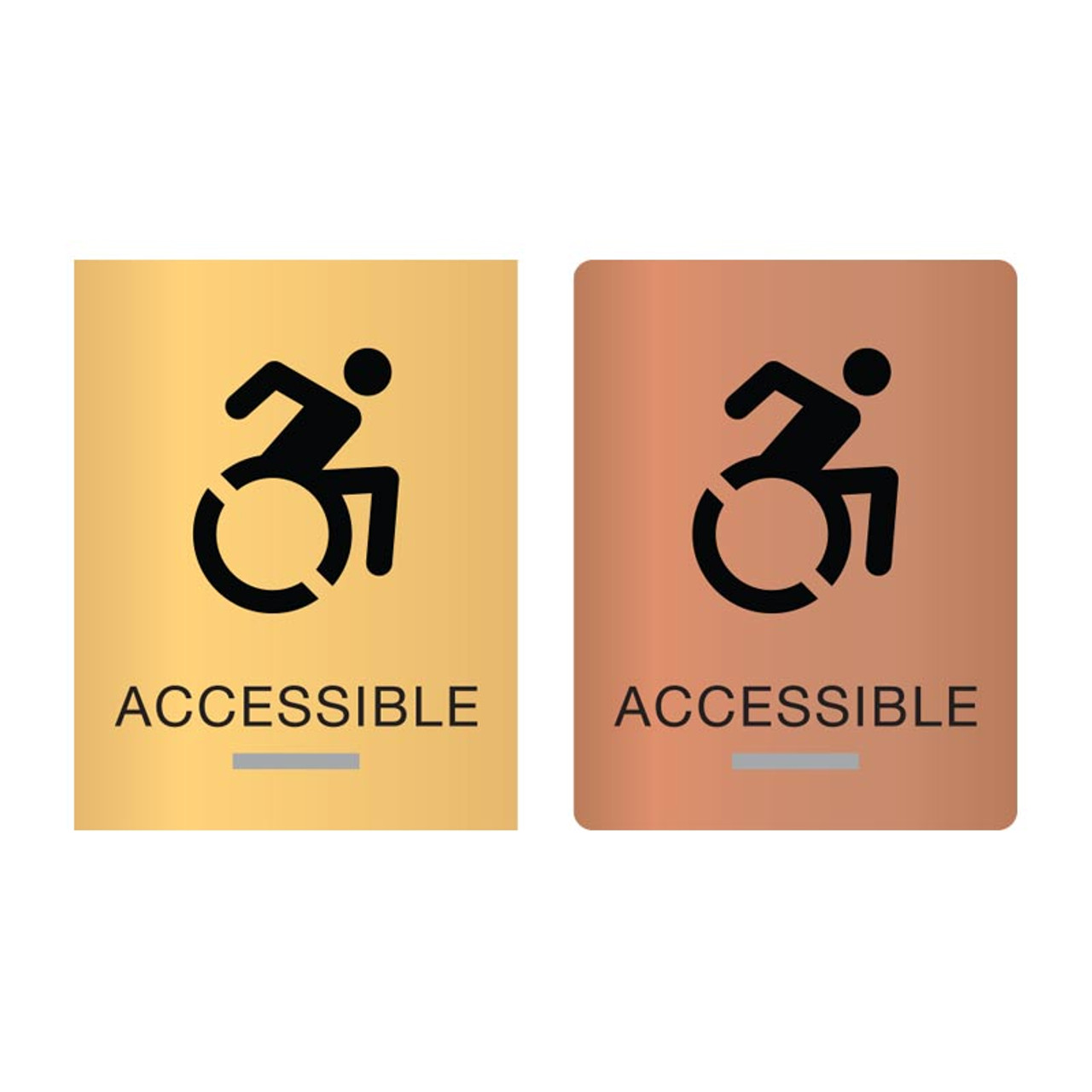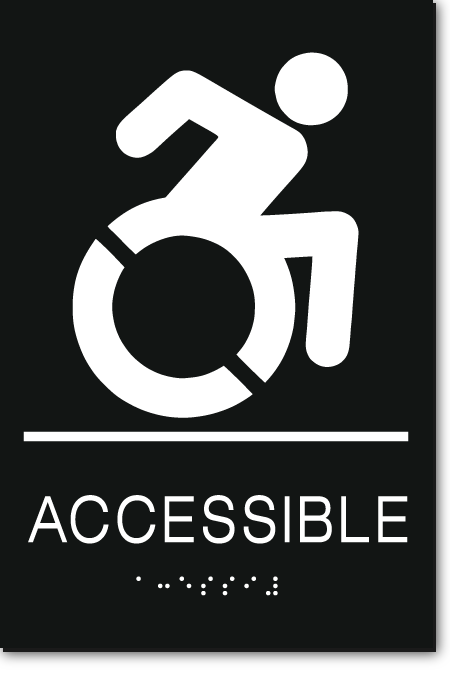Exploring Creative Designs for Effective ADA Signs
Checking Out the Secret Functions of ADA Indications for Boosted Ease Of Access
In the realm of availability, ADA signs offer as quiet yet powerful allies, making certain that spaces are accessible and inclusive for individuals with specials needs. By incorporating Braille and tactile components, these signs damage obstacles for the aesthetically damaged, while high-contrast shade plans and clear typefaces cater to diverse aesthetic needs.
Value of ADA Conformity
Guaranteeing conformity with the Americans with Disabilities Act (ADA) is vital for fostering inclusivity and equal gain access to in public rooms and workplaces. The ADA, passed in 1990, mandates that all public centers, companies, and transportation services fit people with handicaps, ensuring they delight in the exact same civil liberties and possibilities as others. Compliance with ADA standards not only satisfies lawful commitments yet additionally enhances an organization's credibility by showing its dedication to variety and inclusivity.
Among the vital facets of ADA conformity is the implementation of accessible signage. ADA indications are created to make certain that people with handicaps can easily navigate through spaces and buildings. These indications have to comply with specific standards pertaining to dimension, typeface, color comparison, and positioning to ensure visibility and readability for all. Properly carried out ADA signage helps remove barriers that individuals with specials needs commonly come across, thus advertising their freedom and confidence (ADA Signs).
In addition, adhering to ADA regulations can minimize the danger of prospective fines and lawful repercussions. Organizations that fall short to adhere to ADA guidelines may face lawsuits or charges, which can be both economically troublesome and destructive to their public photo. Therefore, ADA conformity is important to fostering an equitable setting for everybody.
Braille and Tactile Components
The incorporation of Braille and tactile aspects right into ADA signage symbolizes the concepts of accessibility and inclusivity. It is normally positioned beneath the corresponding text on signage to make sure that people can access the details without aesthetic assistance.
Responsive components expand past Braille and consist of increased symbols and characters. These components are designed to be noticeable by touch, permitting people to determine space numbers, washrooms, exits, and other crucial areas. The ADA establishes details standards relating to the dimension, spacing, and positioning of these tactile elements to optimize readability and make certain uniformity throughout different environments.

High-Contrast Color Design
High-contrast shade schemes play a pivotal duty in improving the visibility and readability of ADA signs for individuals with aesthetic disabilities. These schemes are essential as they maximize the distinction in light reflectance between message and background, making certain that indications are easily noticeable, even from a distance. The Americans with Disabilities Act (ADA) mandates making use of certain color contrasts to fit those with limited additional reading vision, making it a critical element of conformity.
The effectiveness of high-contrast shades lies in their capacity to stand apart in numerous lighting problems, consisting of dimly lit atmospheres and areas with glare. Typically, dark text on a light history or light text on a dark background is used to achieve ideal contrast. As an example, black message on a white or yellow history gives a stark visual distinction that assists in quick acknowledgment and understanding.

Legible Fonts and Text Dimension
When taking into consideration the design of ADA signage, the option of readable typefaces and appropriate text size can not be overemphasized. These components are essential for making sure that indicators come to individuals with visual problems. The Americans with Disabilities Act (ADA) mandates that typefaces must be sans-serif and not italic, oblique, manuscript, highly decorative, or of unusual type. These demands aid ensure that the text is quickly legible from a range which the personalities are appreciable to diverse audiences.
According to ADA standards, the minimum text elevation must be 5/8 inch, and it must enhance proportionally with viewing range. Consistency in message size contributes to a natural visual experience, aiding people in navigating settings effectively.
Furthermore, spacing in between letters and lines is indispensable to clarity. Adequate spacing stops characters from showing up crowded, enhancing readability. By sticking to these criteria, designers can significantly enhance ease of access, making certain that signage offers its intended function for all people, regardless of their aesthetic capacities.
Effective Positioning Strategies
Strategic positioning of ADA signage is crucial for making the most of access and ensuring conformity with lawful standards. ADA standards specify that indicators must be placed at an elevation between 48 to 60 inches from the ground to ensure they are within the line of view for both standing and seated people.
Furthermore, signs must be positioned nearby to the latch side of doors to allow very easy recognition before additional reading access. Uniformity in sign positioning throughout a facility boosts predictability, minimizing confusion and boosting general customer experience.

Verdict
ADA signs play an essential role in advertising accessibility by incorporating attributes that deal with the requirements of people with impairments. Integrating Braille and responsive elements makes sure critical info comes to the visually impaired, while high-contrast color design and legible sans-serif fonts improve presence throughout various lighting conditions. Efficient positioning strategies, such as suitable installing elevations and critical locations, even more assist in navigating. These components jointly foster an inclusive environment, highlighting the value of ADA conformity in making certain equal access for all.
In the world of availability, ADA indicators serve as silent yet powerful allies, making sure that rooms are inclusive and accessible for individuals with specials needs. The ADA, established in 1990, mandates that all public centers, companies, and transport solutions fit individuals with impairments, ensuring they appreciate the very same legal rights and chances as others. ADA Signs. ADA indications are created to ensure that individuals with handicaps can quickly browse via spaces and structures. right here ADA guidelines stipulate that indications must be installed at an elevation in between 48 to 60 inches from the ground to ensure they are within the line of view for both standing and seated individuals.ADA indicators play an essential function in promoting access by integrating features that resolve the requirements of people with impairments